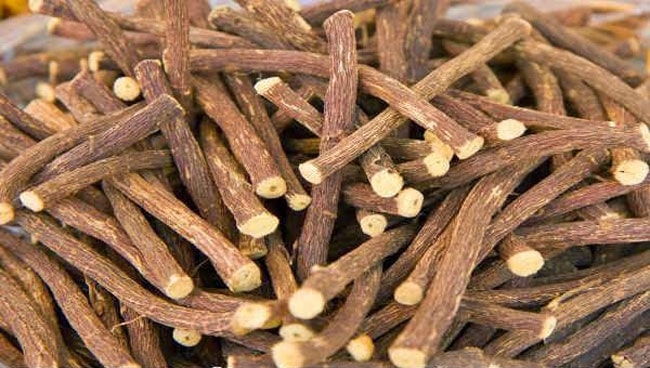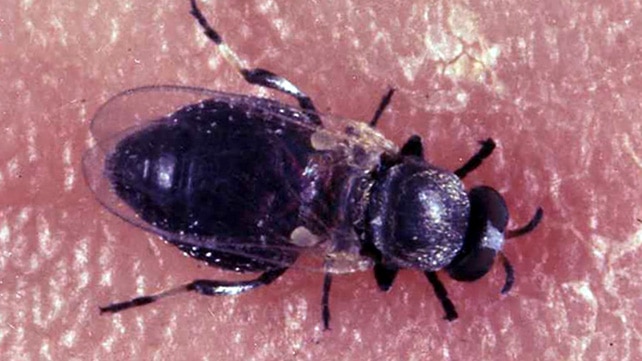About Mulethi:
- Mulethi, commonly known as licorice, is a sweet-tasting perennial shrub.
- Scientific name: Glycyrrhiza glabra
- The roots have a sweet taste due to the presence of glycyrrhizin, which is 50 times sweeter than sucrose.
- It has been traditionally known and used as medicine in Ayurveda (known in Ayurveda as ‘Yashtimadhu’) for rejuvenation.
- Uses of Mulethi:
- Herbal medicines use Mulethi for its natural sweetness.
- It is also used in traditional medicines against chest and lung diseases.
- It is used to flavor candies, tobacco, and alcohol, artificial and natural sweeteners.
- Health Benefits of Mulethi:
- It has anti-viral, anti-inflammatory, antioxidant, and anti-bacterial properties.
- It is known to boost immunity due to the increase in the production of macrophage and lymphocytes.
- Mulethi herb can treat asthma, cough, cold, sore throat, and other respiratory ailments.
- It helps in weight loss as it contains flavonoids that help to reduce excessive fats accumulated in the body.
- It helps improve the digestive system, lessens the acidic level in the intestines, and also helps to detox our body.
- Distribution:
- The plant thrives in a dry and sunny climate and is cultivated in subtropical and warm temperate regions.
- Countries producing licorice include Iran, Afghanistan, China, Pakistan, Iraq, Azerbaijan, Uzbekistan, Turkmenistan, and Turkey.
- It is also cultivated in Punjab and Sub Himalayan tracts in India.
Q1) What is glycyrrhizin ?
Glycyrrhizin is a saponin-like compound that provides the main sweet flavor for Glycyrrhiza glabra (licorice), with potential immunomodulating, anti-inflammatory, hepato- and neuro-protective, and antineoplastic activities.
Source: Himachal Pradesh to become first state in India to have organised cultivation of Mulethi
Last updated on November, 2025
→ Check out the latest UPSC Syllabus 2026 here.
→ Join Vajiram & Ravi’s Interview Guidance Programme for expert help to crack your final UPSC stage.
→ UPSC Mains Result 2025 is now out.
→ UPSC Notification 2026 is scheduled to be released on January 14, 2026.
→ UPSC Calendar 2026 is released on 15th May, 2025.
→ The UPSC Vacancy 2025 were released 1129, out of which 979 were for UPSC CSE and remaining 150 are for UPSC IFoS.
→ UPSC Prelims 2026 will be conducted on 24th May, 2026 & UPSC Mains 2026 will be conducted on 21st August 2026.
→ The UPSC Selection Process is of 3 stages-Prelims, Mains and Interview.
→ UPSC Result 2024 is released with latest UPSC Marksheet 2024. Check Now!
→ UPSC Prelims Result 2025 is out now for the CSE held on 25 May 2025.
→ UPSC Toppers List 2024 is released now. Shakti Dubey is UPSC AIR 1 2024 Topper.
→ UPSC Prelims Question Paper 2025 and Unofficial Prelims Answer Key 2025 are available now.
→ UPSC Mains Question Paper 2025 is out for Essay, GS 1, 2, 3 & GS 4.
→ UPSC Mains Indian Language Question Paper 2025 is now out.
→ UPSC Mains Optional Question Paper 2025 is now out.
→ Also check Best IAS Coaching in Delhi

















